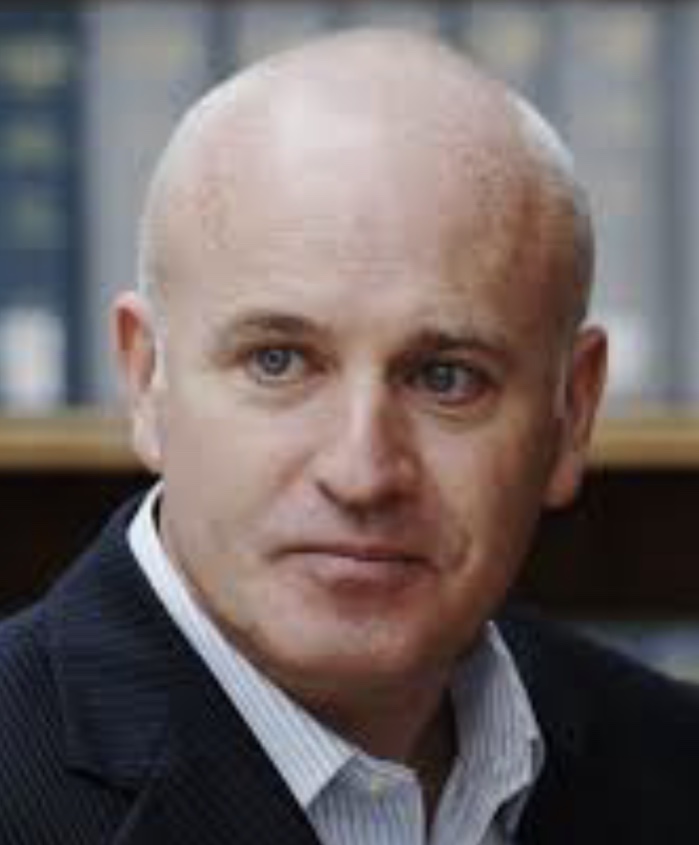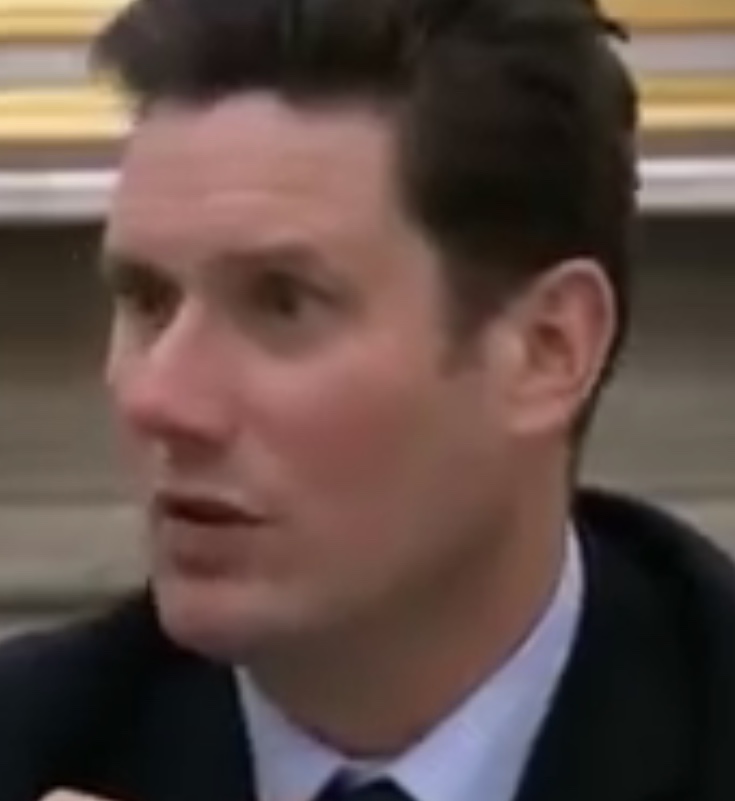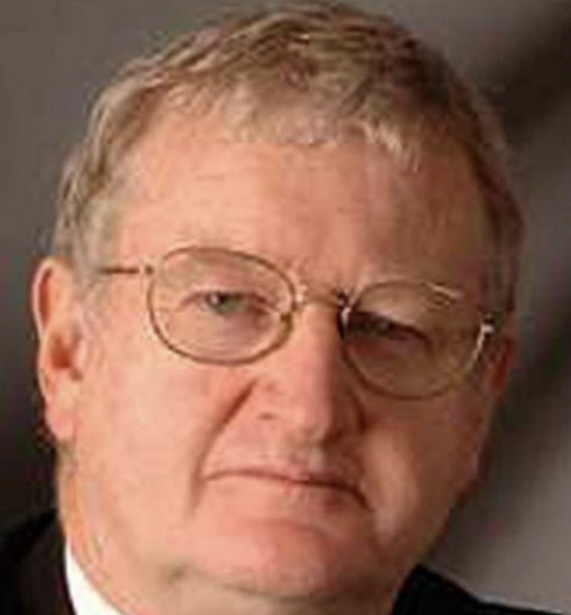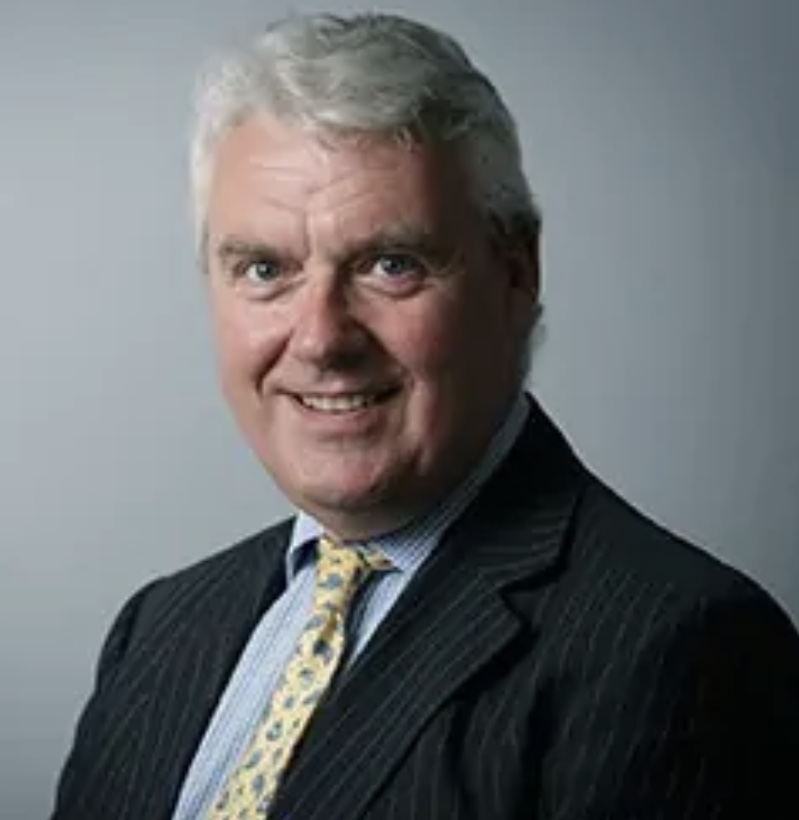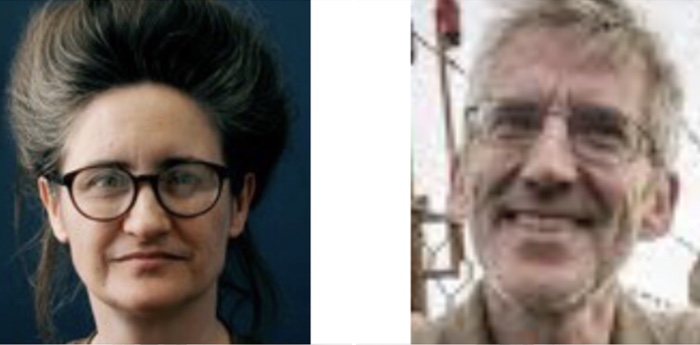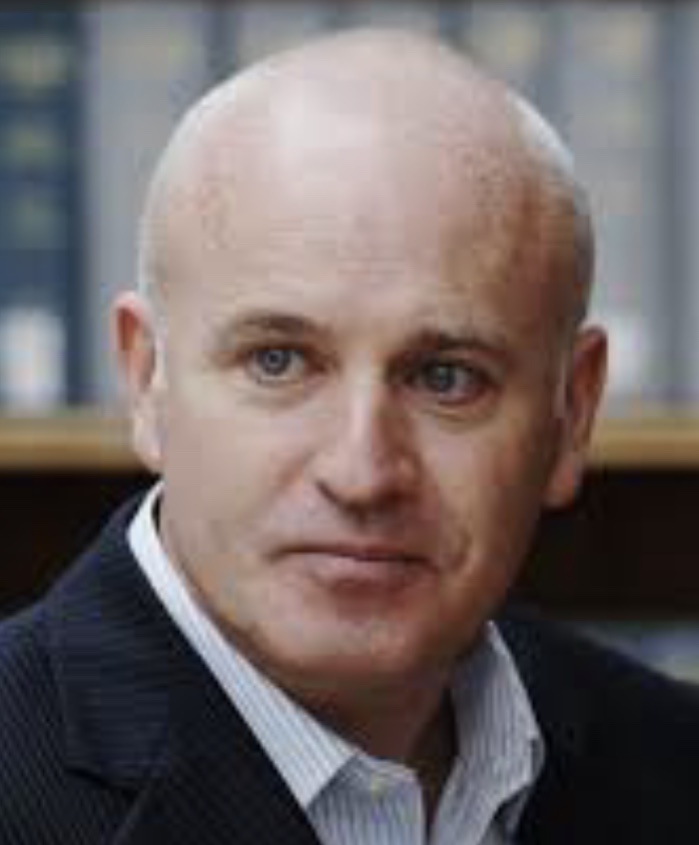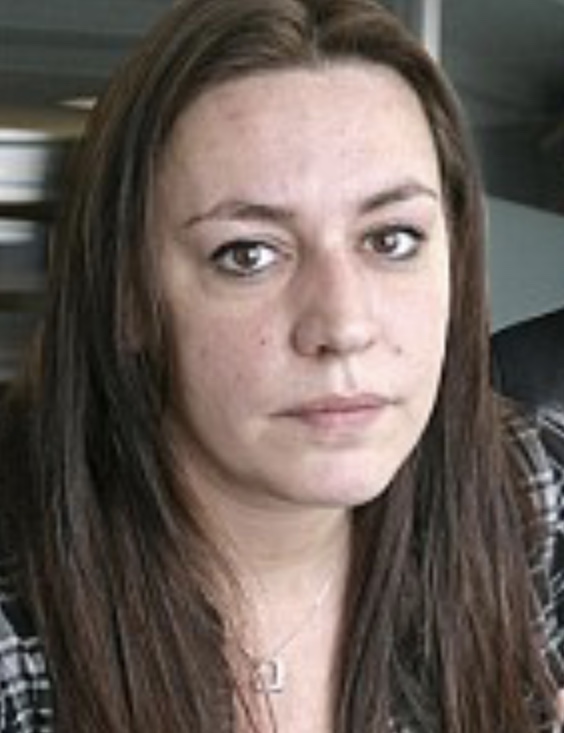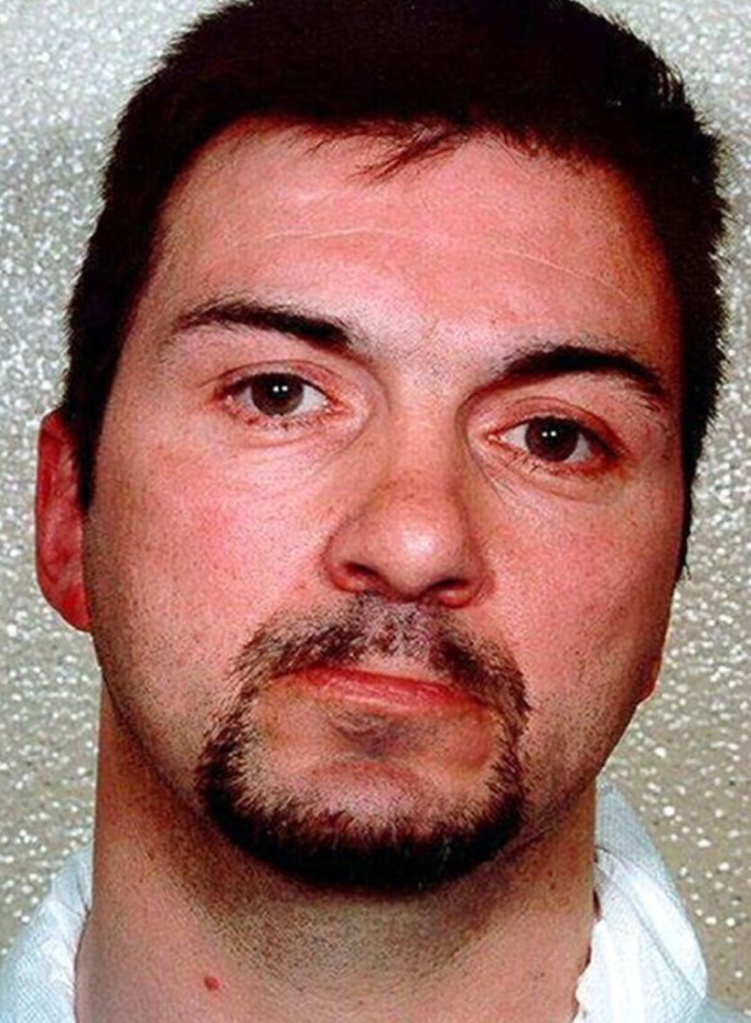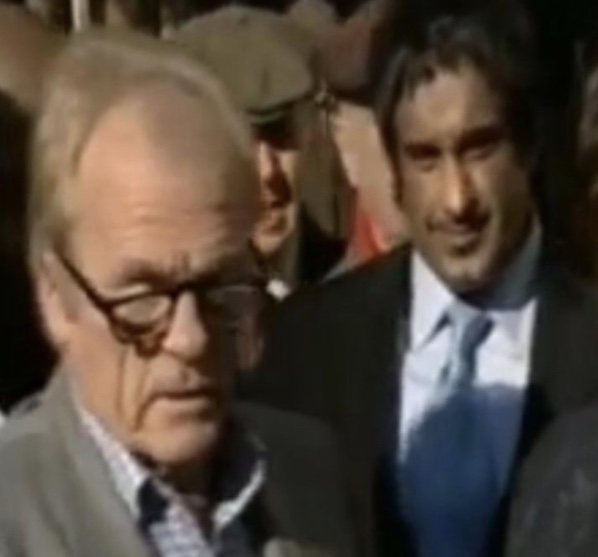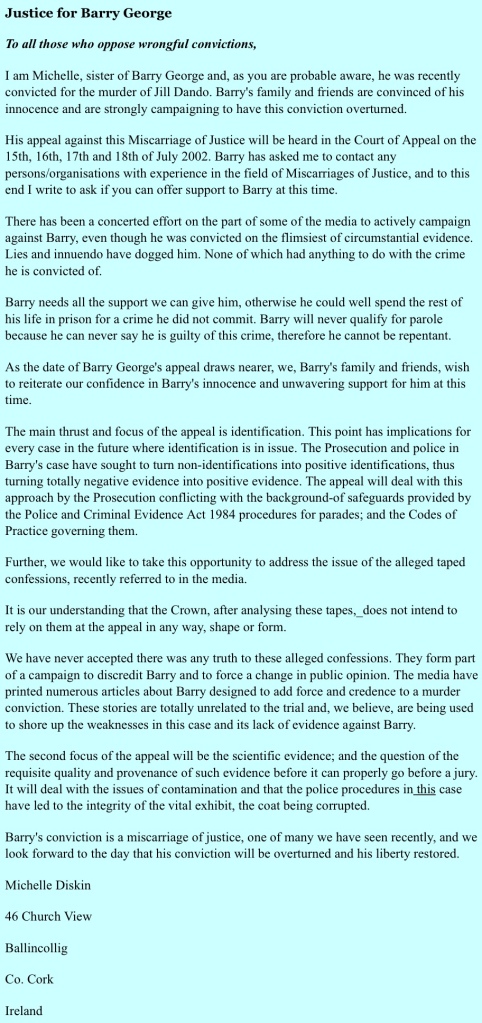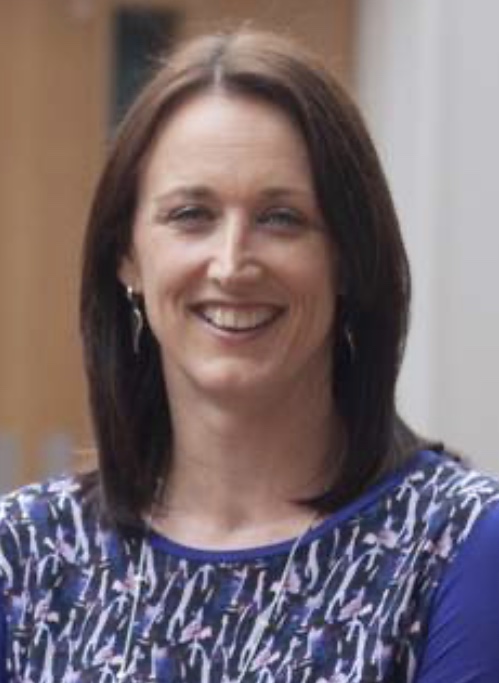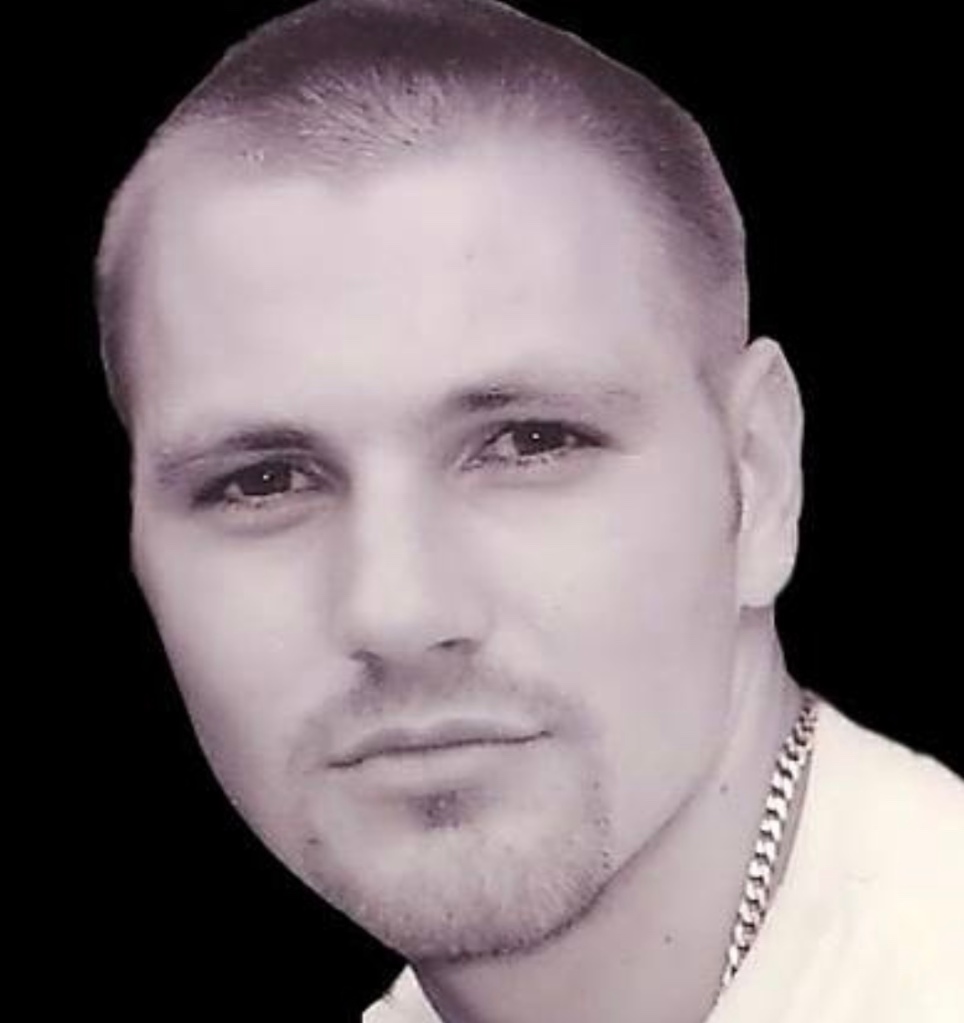
Photograph of Simon Hall taken whilst ’at large’ and ‘wanted’ by Suffolk police for a sexually motivated murder
Skullduggery, Concoctions & Web Of Deceit
The skullduggery used in an attempt to distort the reality of the true narrative of the facts of Simon Hall’s murder of Joan Albert, especially to any new comer to the world of the criminal justice system and its workings, would often succeed in duping people.
Although there were also many people and organisations already familiar with its workings who would also attempt to use their powers of persuasion and paltering to add to the already existing concocted, false and misleading narratives, distortions and confusion of a story based on a web of deceit.
Simon Spence who was the prosecution junior, alongside Graham Parkin, representing the crown prosecution service (CPS) during Simon Hall’s February 2003 trial, had made the false and misleading claim on his online bio that the evidence presented during the trial rested on contested fibre evidence.
This was and is untrue.


NOTE: In June 2023 Innocence Fraud Watch became aware that Simon Spence and his chambers had removed the above blurb from his online bio.
The evidence heard throughout Simon Hall’s trial for his murder of Joan Albert rested on a whole lot more than contested fibre evidence asserted by Simon Spence.
Given Simon Spence’s role throughout the 2003 trial process and the 2010 appeal he would have known this if he was ever familiar with all the evidence in this case.
The jury were presented with a wealth of other evidence and Simon Spence would have had access to all the case files and access to the same police witness statements, which contained within them the very same excerpts which are published throughout this blog series.
The index for this blog series can be found by tapping on the button below;
And as per the prosecutions closing speech, which was made by Graham Parkin, the CPS case did not rest simply on the contested fibre evidence which linked Simon Hall to his murder of Joan Albert.
The case also rested on material concocted by Simon Hall and members of his immediate family (Lynne, Phil and Shaun) heard throughout the trial.
Sentencing
Following the guilty verdict of the February 2003 trial the East Anglian Daily Times reported on Simon Hall’s sentencing.
Their article was published the day after sentencing had taken place. Below are excerpts from their article;
Hall was sentenced to life imprisonment at London’s High Court yesterday but his solicitor said an appeal against his conviction was already underway
Dressed in a black suit, lemon shirt and pale yellow chequered tie, Hall listened to yesterday’s proceedings with a sombre expression
He looked shaken as Mrs Justice Rafferty told him that Mrs Albert’s death had been both “brutal” and “undignified”
“Dogged and painstaking police work eventually led to you, linking you to her home and her body by two different types of fibres”, she said
“Why you chose in the small hours of the morning to break into her home, may never be known”
The judge told Hall his parents must feel devastated after showing loyalty to him during “testing years” when he had acquired a criminal record for violence
Only one sentence could be passed, she added,
“you will go to prison for life”
Before Hall was sentenced, his barrister, Peter Rouch QC, urged Mrs Justice Rafferty to consider the fact that the prosecution’s case was that Mrs Albert’s murder had been a “burglary that went wrong”
He said there was never any suggestion that whoever killed the pensioner had gone to her home to deliberately take her life
Mr Rouch also said Hall’s previous convictions for violence, an assault in McDonalds in 1997 and another for wounding, was a result of a street fight
“He is only 25. He has a strong family union. Whenever he comes out of custody he will have that unit”
During the trial, the prosecution claimed Hall targeted Mrs Albert’s home because of his special knowledge about her living circumstances
His mother, Lyn Hall had walked the widow’s pet dog Rusty and it was alleged Hall once told ex-girlfriend Joanne Blowers that she lived on her own and was from a wealthy background
Graham Parkins QC, said Hall broke into the widow’s home in the early hours of December 16, 2001, with the intention of burgling the property
Hall told police he was drinking in an Ipswich pub on the night of her murder, and moved to Liquid Nightclub, then drove home and arrived at his parents’ house in Snowcroft, Capel, as 6.28am
The prosecution said there was a missing hour unaccounted for.
The main evidence of the trial centered on more than a thousand fibres found in Hall’s wardrobe at his Snowcroft home, his Audi car and in his home in Hill House Road, Ipswich
Forensic experts were unable to distinguish them from those found at Mrs Albert’s home and on her body, the court heard
Hall’s family sat silent and expressionless as he was taken down to the cells
They declined to comment after the case
Excerpts from East Anglian Daily Times article headed 11th April 2003
When The Mask Comes Off & Taking Stock
In 2013 during further occasions when killer Simon Hall’s mask came off, he disclosed numerous fantasies and plans he said he had, some of which included grooming, luring, raping and killing various female members of his family, including his adoptive mother Lynne Hall.
Excerpts from Simon Hall’s Sentence Planning and Review Report, referring to events recorded in September and October 2013 respectively read;
Mr Hall was heard on the pin phone stating that he wanted to hurt himself and others by sexually assaulting them, killing & stab (sic) somebody in the eye
Intel suggests that Mr Hall has been making phone calls stating that he intends to have sex with his mother, sister and adoptive mother and he fantasises about having sex with a child, killing the child and burying the body
Excerpts from page 15 of HMP Wayland Sentence Planning and Review Report (Report dated December 2013)
Killer Simon Hall also disclosed that apparently when he was younger he had “gone down” on the family pet dog.
An offender manager from HM prison service, recorded this in her notes as having been a pet cat, even though the offender manager had the benefit of recorded prison telephone calls and call logs.
And if the offender manager had spoken directly to Simon Hall, or appraised herself of the facts of the case as to why Simon was imprisoned in the first place, she would have possibly known Lynne Hall only ever apparently had Cavalier King Charles Spaniels and rabbits.
Lynne Hall stated;
We had lived at St John’s drive since 1969 and only moved because Phil was changing jobs.
My husband is known as Phil rather than by his first name George.
I should add that for the majority of our married life I have had a dog, they have always been Cavalier King Charles Spaniels, the first one we had was a Blenheim, which denotes the colouring in this case tan and white, he was called “buttons”, Buttons actually made the move from Lincolnshire to Capel with the family.
I think we actually moved around 1980.
Buttons was with us about 3 years before he had to be out down. we were a year without the dog before getting Lady who was a tricolour, Black, tan and white, again she was a Cavalier King Charles Spaniel. Lady only died around 3 years ago
Excerpt from Lynne Hall’s police witness statement dated 25th July 2002
As well as fantasies of harming children, Simon Hall also said he would probably have killed again if he were released from prison.
These disclosures also included comments of killing his then wife.
The following excerpt relates to events from early September 2013, whilst Simon Hall was still in open prison conditions at HMP Hollesley Bay;
Mr Hall’s risk has increased due to his statements over the course of 8/9 September 2013 that he had thought about absconding and ”killing himself”.
However, given Mr Hall’s recent admission of guilt, added to the fact that his index offence and previous offences are of a violent nature, it gives rise to concerns about the potential for him to abscond and commit a further violent offence.
His recent disclosures about sexual matters, also give rise to increased risk that Mr Hall may abscond and commit, not only a violent offence, but one that may be sexual in nature
Statement from page 21 of Simon Hall’s HMP Wayland Sentence Planning and Review Report (Dated December 2013)
A further reference taken from the same report read;
Intel suggests that Mr Hall has thoughts of self harm and smoking drugs
November 2013 note from Simon Hall’s security intelligence files
Lynne and Phil Hall travelled to HMP Wayland on the 30th January 2014.
Lynne Hall visited with her adoptive son Simon Hall, whilst her husband Phil Hall apparently waited in the prison visitors parking area in his car.
In excerpts from a copy of a letter written from HMP Wayland by killer Simon Hall, addressed to his adoptive parents Lynne and Phil Hall, it read;
Dear Lynne and Phil,
If I had children I would never turn my back on them no matter what the situation was. Recent events demonstrate that I have suffered psychological problems for most of my life and they are only going to get worse unless I get the help I need
The difference between us is that I am sorry for hurting you and bringing a huge cloud of doubt and shame over ”The Family”. But all you seem to care about is your image and reputation
You’re ashamed of me – fair enough, but as much as I love you both, I’m ashamed of you too.
You turned your back on me when I needed you the most. I’m obviously not well, but you couldn’t give a shit.
Instead you remain victims and have not offered any kind of help or support when I clearly needed it. Some of my actions are unforgivable, but so are yours
I will not write again and I have removed the phone number
True colours always reveal themselves
Simon
Excerpts from a copy of letter Simon Hall wrote from HMP Wayland to his adoptive parents Lynne and Phil Hall
Excerpts from one of killer Simon Hall’s final letters read;
I panic because of shame and because the truth is destroying me.
Living in denial gave me no reason to panic and if you remember, I only started to panic like that when I was being found out lying. I panic through fear of judgement and rejection
Am I like my biological father? He put himself before the children that he had
I am worried about genetics.
All of the Walton kids are damaged.
I believe that both nature and nurture f**ked me up, I do hate Lynne I do hate Shaun, but I hate myself more.
If they were in this cell, I’d punch their lights out. That’s true, but I’d want to hurt myself too
I don’t think it’s genetics.
I remember my conscience as a kid, before Shaun got hold of me. I think nurture is so important from both to adulthood.
If I’d been in loving households, I’d be different
Excerpts from one of Simon Hall’s last letters from 2014
Simon Hall was found hanging in his prison cell after committing suicide on the 23rd February 2014.






